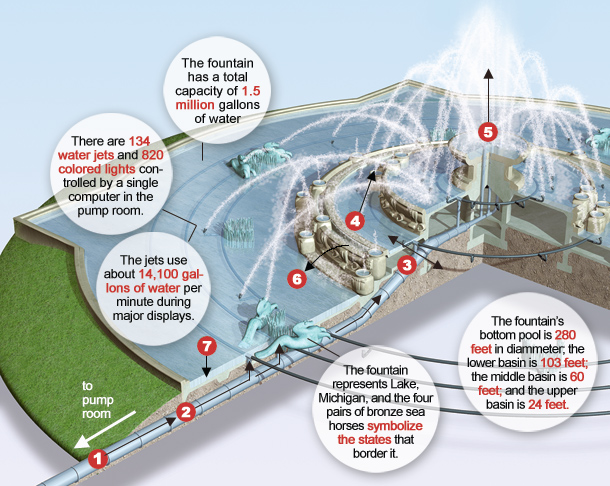When it opened to the public in 1927, Buckingham Fountain immediately settled into its place as one of Chicago’s best-known landmarks. Commissioned by the philanthropist Kate Buckingham in memory of her brother Clarence and designed by Edward H. Bennett, a former assistant to Daniel Burnham, the fountain was inspired by the Latona Basin in Louis XIV’s gardens at Versailles. Now that it’s operating on a summer schedule (with dazzling water displays for 20 minutes at the top of each hour), here’s a closer look at how it all works.

1. Water flows out of three pumps from the 35-foot-long-by-25-foot-wide underground pump room located on the fountain’s southeast side.
2. It travels along the main pipe, flowing into a series of smaller pipes until it reaches each of the fountain’s four levels.
3. From there, the water breaks into a “T,” flowing left and right through the circular set of pipes to the jets. With 40 to 100 psi (pounds per square inch) of pressure, the water reaches all the jets at the same time.
4. Water shoots about 50 feet high out of the jets into the next highest level of the fountain, filling each basin.
5. At the very top level, the jets shoot water straight into the air to heights of 150 feet.
6. When water fills each level, it spills over the edge, cascading down the fountain until it drains out of the lowest basin, back into the pump room.
7. Then the water is recycled into the fountain, and the process begins all over again.
Illustration: Don Foley


